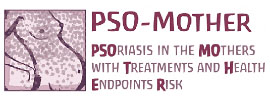| Evaluation of outcomes of health interventions |
 |
 |
 |
|
The measurement and benchmarking of outcomes of health care interventions are considered key strategies for promoting the quality and equity of health care. Any medical intervention can be considered a “treatment”. It is possible to compare between them interventions/ specific procedures, pharmacological treatments, typology of care (eg hospital/ territorial), typology of cure (eg medical/ surgical), organizational models in emergency assistance (eg hub-spoke network in acute coronary syndrome), prevention (eg screening), diagnostic and therapeutic assistance for the management and monitoring of chronic diseases, typology of structure (private/ public), complexity of care (eg, intensive care use, typology of ward (specialist/ non-specialist), volume of activity (eg high/ low volume), organizational modalities (eg timely access to surgery).
In recent years, research and scientific debate on the subject of comparative evaluation of outcome in Italy have grown relevantly thanks to the realization of studies and research projects whose results, disseminated to the scientific community and in some cases also via the media, have attracted a lot of interest by directors or managers of clinical governance, health professionals, the scientific societies, and last not least the citizens themselves. While on the one hand it is desirable that the assessment of outcome in Italy takes into consideration a growing amount of evidence from different geographical areas and comparisons between diverse realities of healthcare and organizational models, on the other hand it is - even more so - essential that on a national level standardized rigorous, reproducible and validated methodologies are disseminated and applied. In this context, the Regional Program for Evaluation of Outcomes of Health Care Interventions (P.Re.Val.E.), entrusted by the Lazio Region to the DEP, aims to “define and measure the outcomes of health care interventions, to measure the variability of outcome between structures and geographical areas, to identify critical areas on which to implement programs to improve the quality of care, and to monitor changes in the quality of care over time”. The program has developed and monitors 70 outcome indicators which are regrouped into nine clinical areas: cardiology, surgery, gastroenterology, orthopedics, pneumology, neurology, gynecology/ obstetrics, territorial assistance and oncology, taking into consideration the differences in the characteristics and severity of the patients for a correct comparison between hospitals or regions. The Program for the Evaluation of the Decisions and Activities of Health Facilities (PNE), entrusted by the Ministry of Health to the National Agency for Regional Health Services (Agenas) and of which the DEP is the Operational Reference Centre for the collection, management, processing and analysis of the data, aims to measure the variability in outcome between providers and/ or between professionals and between ASL, with possible applications in terms of accreditation, remuneration, information of citizens/ users, with the publication of the results of outcome of all facilities for the “empowerment” of citizens and their associations in the selection and evaluation of services. The program has developed and monitors 46 outcome indicators, regrouped into nine clinical areas: cardiology, surgery, gastroenterology, orthopedics, pneumology, neurology, gynecology/ obstetrics, territorial assistance and oncology, taking into consideration the differences in the characteristics and severity of the patients. At present, the most appropriate use of outcome indicators is as part of a process of continuous improvement of quality of health services as well as as an information prerequisite for direct and explicit measures of health planning through appropriate means, both in the area of commission (authorization, accreditation, trading, remuneration) and in that of production.
Activities
To know more
|




































